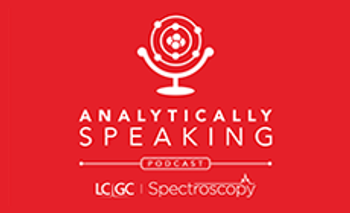
Comparative Study Reveals Two Methods for Determining Tioconazole
Researchers have developed microbiological and spectrophotometric methods for the quantitative determination of tioconazole, an antifungal drug, providing valuable tools for the analysis and quality control of tioconazole in pharmaceutical preparations.
Two highly sensitive methods, microbiological and charge transfer spectrophotometric, can accurately determine the concentration of tioconazole, an antifungal drug, in its pure form, according to a recent study (1). The findings of this comparative study were published in the journal Spectrochimica Acta Part A: Molecular and Biomolecular Spectroscopy (1).
The microbiological assay was one of the methods used. It utilized the agar disk diffusion technique, where the inhibition zones related to different concentrations of tioconazole were measured (1). This method allowed for the quantitative determination of tioconazole in both its pure form and pharmaceutical formulations (1).
The second method relied on the formation of a charge transfer complex between tioconazole as an n-donor and chloranilic acid as a π-acceptor at room temperature (1). Spectrophotometry was used to measure the resulting complex at a wavelength of 530 nm (1). The researchers determined the molar absorptivity and formation constant of the complex using various mathematical models, including the Benesi-Hildebrand, Foster-Hammick-Wardley, Scott, Pushkin-Varshney-Kamoonpuri, and Scatchard equations (1).
The mathematical models used in this study are described below. The Benesi-Hildebrand equation is a linear relationship that relates the molar absorptivity of a complex to the concentration of the analyte and the acceptor molecule, assuming a reversible, bimolecular reaction with a 1:1 stoichiometry (1). The Foster-Hammick-Wardley equation is a mathematical model used to figure out the formation constant by plotting the absorbance of the complex against the analyte concentration. It assuming a reversible, bimolecular reaction with a 1:1 stoichiometry and proportional absorbance (1). The Scott equation is an empirical equation that calculates the formation constant, considering a reversible, bimolecular reaction with a 1:1 stoichiometry and proportional absorbance (1). The Pushkin-Varshney-Kamoonpuri equation is a modified Scott equation, accounting for the influence of a third species on the complex formation (1). Lastly, the Scatchard equation is a graphical method for determining binding constants and the number of binding sites, using a plot of the ratio of bound analyte to free analyte against the concentration of bound analyte, yielding information about binding constants and maximum binding sites in the complex (1).
The study evaluated different thermodynamic parameters associated with the formation of the complex, such as the free energy change (ΔG°), standard enthalpy (ΔH°), and standard entropy change (ΔS°) (1). These parameters provide valuable insights into the energy changes and stability of the complex.
Both the microbiological and spectrophotometric methods were validated following the guidelines recommended by the International Council for Harmonisation of Technical Requirements for Pharmaceuticals for Human Use (ICH) (1). The researchers successfully applied these validated methods for the quantification of tioconazole in pure form and pharmaceutical formulations.
This comparative study highlights the efficacy of the microbiological and charge transfer spectrophotometric methods for the accurate determination of tioconazole. The availability of two reliable methods provides researchers and pharmaceutical industry professionals with versatile tools for quality control and analysis of tioconazole-containing products. The findings contribute to the advancement of analytical techniques and pharmaceutical research, ensuring the safety and efficacy of antifungal treatments.
Reference
(1) Elmasry, M. S.; El-Demerdash, A. S.; Sharaf, Y. A.Microbiological and spectrophotometric methods for the determination of tioconazole: A comparative thermodynamic study. Spectrochimica Acta Part A: Mol. Biomol. Spectrosc. 2023, 298, 122770. DOI:
Newsletter
Get essential updates on the latest spectroscopy technologies, regulatory standards, and best practices—subscribe today to Spectroscopy.




